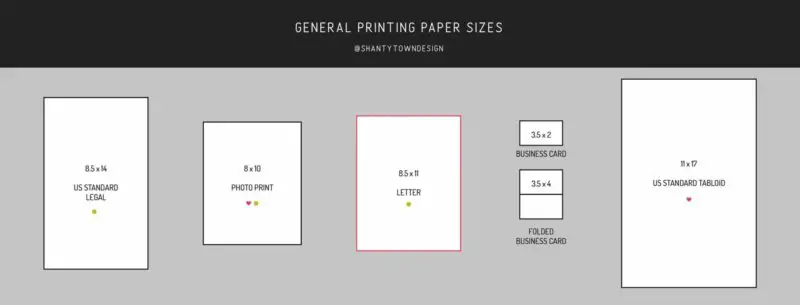When talking about regular printer paper size, it’s important to understand that this can vary depending on the region and the type of printer being used. In the United States, the standard printer paper size is 8.5 inches by 11 inches, which is commonly known as “Letter” size. This size is suitable for various document formats, such as letters, reports, and forms.
In other parts of the world, however, a different set of standard sizes is used, with the most common being the ISO A series. The A4 size, which measures 210 millimeters by 297 millimeters (approximately 8.27 inches by 11.69 inches), is often used for document printing, and it’s considered a standard paper size in many countries outside the United States.
It’s worth noting that there are other paper sizes available, such as Legal (8.5 inches by 14 inches) and Tabloid (11 inches by 17 inches). However, the 8.5 inches by 11 inches Letter size and the A4 size are widely recognized as the standard printer paper sizes, making them popular choices for home and office use.
| Paper Size | Dimensions (in inches) | Dimensions (in millimeters) |
|---|---|---|
| Letter (US) | 8.5 x 11 | 216 x 279 |
| A4 (ISO) | 8.27 x 11.69 | 210 x 297 |
| Legal | 8.5 x 14 | 216 x 356 |
| Tabloid | 11 x 17 | 279 x 432 |
Regular Printer Paper Sizes
As someone who has experience with printer paper sizes, I can confidently share information about the common sizes used in the US, Canada, and North America.

US Letter
The most common printer paper size in the United States and North America is the US Letter size, which measures 8.5 inches by 11 inches. This size is widely used for everyday printing needs, such as documents, letters, and other personal or professional tasks.
ISO A Series
The International Organization for Standardization (ISO) has created a series of paper sizes, called the A series, which includes the widely used A4 size. A4 paper is nearly the same size as the US Letter, with dimensions of 8.27 inches by 11.69 inches. It’s the standard size for printing documents globally and is commonly used in offices, schools, and homes outside of North America.
ISO B Series
The ISO also has a B series of paper sizes, which are less common than the A series. Some examples of B series sizes are:
- B1: 27.8 inches x 39.4 inches
- B2: 19.7 inches x 27.8 inches
- B3: 13.9 inches x 19.7 inches
These sizes generally serve as a middle ground between the A series and are used for specific purposes like large-format printing or posters.
ANSI Standard
In the United States, besides the US Letter size, there is also the ANSI standard for paper sizes. This system has the following dimensions:
- ANSI A: 8.5 inches x 11 inches (similar to US Letter)
- ANSI B: 11 inches x 17 inches (similar to Tabloid size)
- ANSI C: 17 inches x 22 inches
- ANSI D: 22 inches x 34 inches
- ANSI E: 34 inches x 44 inches
These sizes are typically used for technical drawings, engineering documents, and larger format prints.
C Series
The C series of paper sizes are mainly used for envelopes. They are designed to accommodate the corresponding A series paper sizes comfortably. A few examples of C series sizes include:
- C3: 12.8 inches x 18 inches
- C4: 9 inches x 12.8 inches
- C5: 6.4 inches x 9 inches
Each of the C series sizes is intended to fit the equivalent A series paper size when it’s folded, making them convenient for mailing purposes.
The most common printer paper size in the United States and North America is the US Letter size, which measures 8.5 inches by 11 inches.
I hope this information helps provide a clear understanding of the various regular printer paper sizes used in the US, Canada, and across the globe.
Dimensions
When it comes to regular printer paper, I can confidently say that its dimensions largely depend on the region and standards followed. In the United States and Canada, the dimensions of regular printer paper are 8.5 x 11 inches, also known as letter-size paper. This translates to 216 x 279 millimeters.
On the other hand, the majority of the world follows the A series of paper sizes, particularly the A4 size. The dimensions of A4 paper are 210mm by 297mm or 8.27 inches by 11.69 inches. This size is commonly used in offices, schools, and homes for printing documents.
There are also other paper sizes within the A series, such as A3, A5, and so on. Each of these sizes have specific dimensions, both in inches and millimeters, that cater to different printing needs. However, A4 remains the most popular and widely used size for regular printing purposes.
Knowing the dimensions of the printer paper you need is crucial for the quality of the printed material. With this information, I hope it becomes easier for you to choose the right size for your documents and printing projects. Remember to always consider the appropriate paper size based on your location and specific requirements.
Weight and Thickness
Choosing the right weight and thickness for your printing needs to ensure optimal results.
When considering regular printer paper, it’s important to be aware of the weight and thickness of the paper. The weight of the paper can often be seen as a number followed by the “#” symbol. This represents how much a ream (500 sheets) of paper weighs in pounds. For example, an 80-pound ream of cover stock may be sold as “80# cover”.
In general, cardstock paper is heavier than regular printer paper and its weight is measured in points. The thickness of the paper is also a crucial factor to consider for printing purposes, as the thickness may impact the print quality and ability of desktop printers to handle the paper.
Standard desktop printers usually can’t handle anything over 80# cover, while multifunction copiers with a bypass tray can usually manage paper weights of 100 pounds or more. It’s essential to choose the right weight and thickness for your printing needs to ensure optimal results.
Cover paper comes in various finishes such as uncoated, matte/dull, and glossy. Each finish has its own characteristics and is suitable for different printing purposes. It’s essential to understand the weight, thickness, and finish of the paper before using it for your printing projects.
To summarize, regular printer paper has a particular weight and thickness, affecting its usability in different printers and for various purposes. The paper’s weight is typically measured in pounds, while cardstock paper’s weight is measured in points. When selecting paper for your printing needs, make sure to choose the right paper weight, thickness, and finish to ensure the best print quality possible.
Types of Paper and Finish
When it comes to choosing the right paper for printing, there are several factors to consider, including the type of paper, the finish, and the texture. In this section, I will discuss the most common types of paper and their respective finishes.
One type of paper is coated paper, which has a surface coating that gives it a smoother and shinier appearance. Coated paper comes in two main finishes: matte and glossy. Matte finish has a more subdued appearance, with less glare and reflection. It is a great choice for projects that require easy readability, such as text documents. On the other hand, a glossy finish has a high shine and luster, making it an ideal choice for photos and images where color vibrancy is crucial.
Uncoated paper, as the name suggests, does not have any surface coating. This type of paper tends to have a rougher texture and is more absorbent, which can sometimes lead to less sharp print quality. However, uncoated paper is an excellent choice when you’re aiming for a more natural and eco-friendly appearance, such as for artisanal invitations or business cards.
The texture of the paper can also greatly impact the final look and feel of your printed materials. Textured paper options include linen, felt, and laid finishes, each offering a unique tactile experience. Linen paper has a crosshatch pattern, similar to fabric, which adds an elegant touch to invitations and stationery. Felt finish has a soft, velvety feel, making it perfect for fine art prints and greeting cards. Laid paper has a ribbed texture and is often used for formal documents and certificates.
Incorporating the correct paper type, finish, and texture will greatly enhance your printed materials. As you can see, there are numerous options to choose from, and understanding the differences between them will ultimately help you make the best decision for your project.
Uses of Different Paper Sizes

In my experience, different paper sizes serve various purposes, especially when it comes to printing marketing materials and stationery items. Here, I will discuss some common uses of various paper sizes in relation to brochures, flyers, posters, business cards, postcards, and envelopes.
A4 size (210mm x 297mm, or 8.27″ x 11.69″) is the standard paper size used for regular printing purposes, such as documents and letters. However, it’s also suitable for single-page brochures and flyers, given its compatibility with most printers, both at home and in offices.
For larger promotional materials, like posters, the B series of paper sizes, particularly B2 and B1, are often used. This series allows for more space to showcase eye-catching designs and provide essential information, enhancing the visual impact of your marketing materials.
In the case of business cards and postcards, smaller sizes like A7 or even custom dimensions are the go-to options. These sizes are ideal for retaining a compact and portable format while still offering enough space to display contact details, logos, and a message for your clients or recipients.
Now, when it comes to envelopes, the C series of paper sizes is a popular choice. These sizes are designed to perfectly accommodate the corresponding A and B series paper sizes when folded. For example, a C5 envelope can hold a folded A4 sized document. This makes the C series ideal for sending out letters, invitations, or small marketing materials like flyers and brochures.
To sum it up, picking the right paper size for your printing needs is essential to not only ensure compatibility with printers and other equipment but also effectively convey your message and create a lasting impression. And by understanding the common uses of different paper sizes, like A4 for regular documents, B series for posters, and C series for envelopes, you can make informed decisions when designing or printing your marketing materials and stationery items.
Paper Standards and Formats
When it comes to regular printer paper, the most common size is A4, which measures 210mm x 297mm. This size falls under the ISO 216 standard, an international standard used in most parts of the world, except for North America and some parts of Central and South America.
In these regions, the Letter format is more prevalent, with dimensions of 8.5 x 11 inches. The Letter format is part of the ANSI paper size system, which has categories from ANSI A to ANSI E. These paper sizes are prevalent in the United States and Canada and allow for easy document sharing and printing among businesses and individuals.
Here is a brief breakdown of the ANSI paper sizes:
- ANSI A: 8.5 x 11 inches (Letter)
- ANSI B: 11 x 17 inches (Tabloid or Ledger)
- ANSI C: 17 x 22 inches
- ANSI D: 22 x 34 inches (Architectural D)
- ANSI E: 34 x 44 inches (Architectural E)
For comparison, ISO paper sizes include not only the A series but also the B and C series, catering to various purposes like posters and envelopes respectively.
In conclusion, regular printer paper sizes vary depending on the part of the world you’re in. The ISO 216 standard with A4 size is more common worldwide, while the ANSI paper size system, including the Letter format, dominates in North America. It’s important to remember these differences when working with documents internationally or in multiple regions.
Print Sizes and Durability
When it comes to regular printer paper, size is an important factor to consider. I have found that the most commonly used size for everyday printing is A4, which measures 210 x 297 millimeters (8.27 x 11.69 inches) source. This size is versatile and fits various projects, from printing documents to creating craft items or stationery.
Aside from size, durability is another crucial aspect to consider. In general, thicker, heavier paper tends to be more durable and can withstand more wear and tear. Paper weight is expressed in pounds (lbs) or grams per square meter (gsm). For standard documents, I suggest using a paper weight of around 20 lbs (75 gsm) to 24 lbs (90 gsm). For projects that require sturdier material, such as invitations or business cards, I prefer using a paper weight of 60 lbs (224 gsm) or higher.
An important characteristic of printer paper is its ability to be absorbent. This ensures that the ink is soaked up effectively and does not smudge when it comes into contact with other surfaces. Absorbent paper usually has a matte finish, which is perfect for printing text-heavy documents. I’ve found that choosing the right paper for your printer will make a significant difference in the final printed product, ensuring both readability and longevity of the ink.
For stationery projects, like cards or letterheads, it’s essential to choose a high-quality paper that is both durable and eye-catching. In these cases, I opt for a heavier paper weight and a more unique texture, such as linen or cotton. This adds an elegant touch to the final product and makes a lasting impression on recipients.
In summary, when selecting printer paper, keep in mind the desired print size, durability, and absorbency. Choose the appropriate paper weight and finish based on the specific project requirements, and don’t hesitate to experiment with different types of stationery for that added flair.
Other Factors to Consider
When choosing printer paper, it’s important to not only consider the size but also other factors that can impact your printing experience. As a knowledgeable and confident individual, I’d like to share a few other factors you should consider when selecting your printer paper.
First, the number of sheets in a ream of paper is essential to know when you’re purchasing paper, as it could affect your overall printing costs. A ream typically contains 500 sheets of paper. Being aware of the number of sheets per ream can help you determine how much you need for your project and can allow for effective budgeting and planning.
In addition to the ream, the type of paper used plays a crucial role in the final product. For example, cardstock is thicker and more durable than ordinary paper. Cardstock is commonly used for creating paper menus, postcards, and invitations, thanks to its durability. However, there is another type of paper, like glossy paper, which is often used for printing photos, as it provides vibrant colors and a professional look.
Another factor to consider is the thickness of the paper. If you’re planning to print documents like magazines or brochures, you might want to opt for thinner paper. As mentioned in the Renderforest article, the two most common print sizes for magazines are 8.5″ x 11″ and 5.5″ x 8.5″. Thinner paper can make a magazine more lightweight and easier to handle.
Lastly, it’s essential to consider the material of your printer paper, especially if you want to use it for specific projects. Some available materials include recycled paper, glossy paper, and cardboard. Each material has its characteristics and benefits, depending on your requirements. For instance, recycled paper is environmentally friendly, while glossy paper adds a shine to your printed images. Cardboard, on the other hand, is a thicker material used for creating sturdy products like packaging and presentations.
To sum it up, when selecting printer paper, it’s vital to consider various factors like the number of sheets in a ream, paper type, paper thickness, and material. By taking all these aspects into account, you can make an informed decision and ensure a successful printing project.
FAQ
The standard printer paper size in the United States is 8.5 inches by 11 inches, also known as “Letter” size.
The most common paper size used for document printing globally is A4, which measures 210 millimeters by 297 millimeters (approximately 8.27 inches by 11.69 inches).
Yes, there are other paper sizes available such as Legal (8.5 inches by 14 inches) and Tabloid (11 inches by 17 inches).
Different paper sizes have various uses. Some common uses include A4 size for everyday printing, B series sizes for posters, smaller sizes like A7 for business cards and postcards, and C series sizes for envelopes.
Paper weight and thickness play a role in print quality and printer compatibility. Standard desktop printers usually can’t handle anything over 80# cover, while multifunction copiers with a bypass tray can usually manage paper weights of 100 pounds or more. It’s essential to choose the right weight and thickness for your printing needs to ensure optimal results.
- What Size is Regular Printer Paper? Quick Guide for Paper Dimensions - June 18, 2023
- What Size is My Monitor: A Comprehensive Guide - June 18, 2023
- How Big is Italy Compared to the US? A Concise Comparison - June 16, 2023

